Woodland Garden
As you stand on the Truss Bridge, you will see that a big part of the Woodland Garden is occupied by native trees. Black walnut, hackberry, and locust trees, for example, provide a summer canopy for this garden.
Overview of Woodland Garden
The Woodland Garden was planted before the museum opened. It has been updated and added to over the years, although the concept centered by the waterfall is original.
As you stand on the Truss Bridge, you will see that a big part of the Woodland Garden is occupied by native trees. Black walnut, hackberry, and locust trees, for example, provide a summer canopy for this garden.
There are also native under-story trees like our redbud trees. Many other shade-loving and under-story plants with various bloom cycles have been added to give multi-season color and interest to this garden.
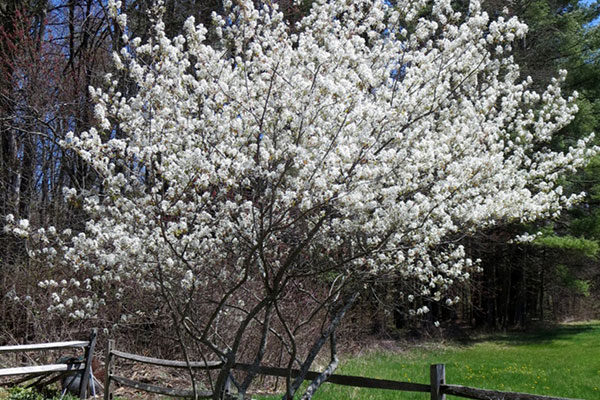
Serviceberry
Common Name: Serviceberry
Botanical Name: Amelanchier
Height: 15–40 feet
Spread: 15–25 feet
Location: Full sun to part shade
Bloom: April, white
Hardiness zone 2–9
Amelanchier in its natural setting is normally an understory tree or more commonly a large shrub, although it can survive in an open setting with proper irrigation. At maturity, this plant grows 15 to 40 feet tall. The 3” oval shape leaves appear in spring with bronze tints changing to a dark green for the summer then changing again to yellows, reds, and oranges for great fall color. The fragrant white flowers bloom in April followed by edible berries that can be used in jellies and jams.

Visions in White Astilbe
Common Name: Visions in White Astilbe
Botanical Name: Astilbe chinensis
Height: 1–1.5 feet
Spread: 1–1.5 feet
Location: Part shade to full shade
Bloom: July to August, white
Hardiness zone 4–8
Visions in White receives admiration for its longer lasting flower plumes that grow above the clump-forming, fern-like foliage. In the spring, the hundreds of tightly packed flowers in plumes on upright stems only open a few at a time, providing a long flowering season, longer than some other varieties. These are slow-spreading plants tolerant of drought, although they still prefer constant moisture in well-drained soil.
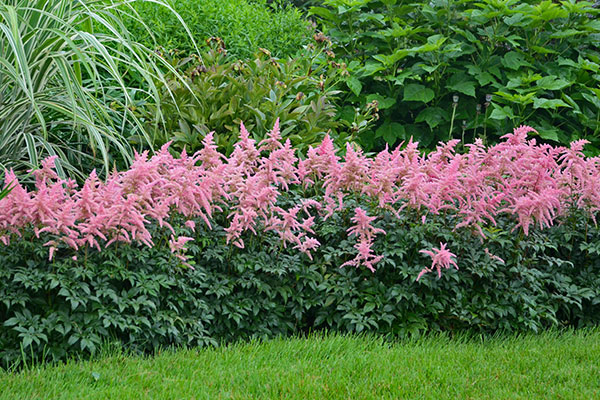
Erika Astilbe
Common Name: Erika Astilbe
Botanical Name: Astilbe arendsii
Height: 2.5–3 feet
Spread: 1.5–2 feet
Location: Part shade to full shade
Bloom: June to July, pink
Hardiness zone 4–9
This astilbe hybrid is a little taller than some other Astilbe varieties and has a more open growth habit with upright pink flower plumes on dark red stems. The mounds of fern-like foliage start the season out in a reddish color, changing to a darker green for the summer season, and can grow to 18” tall. Many people use these plants for cut flowers that seem to last and add beauty to any flower arrangement.

Straussenfeder Astilbe
Common Name: Straussenfeder Astilbe
Botanical Name: Astilbe arendsii
Height: 2.5–3.5 feet
Spread: 1.5–2 feet
Location: Part shade to full shade
Bloom: June to July, pink salmon
Hardiness zone 3–9
This astilbe hybrid is a departure from the more familiar upright astilbes because its blooms form a fountain of weeping salmon-pink flowers in summer. The mounds of fern-like foliage start the season out in a reddish color, changing to a darker green, and can grow to 20” tall. Many people use astilbes for cut flowers that seem to last and add beauty to any flower arrangement, but we prefer to leave ours on the stems for more late season ornamental interest in our garden.

Girard's Pleasant White Azalea
Common Name: Girard's Pleasant White Azalea
Botanical Name: Azalea (Rhododendron)
Height: 2–2.5 feet
Spread: 2–2.5 feet
Location: Part shade
Bloom: May, white
Hardiness zone 5–8
Pleasant White is a hybrid azalea developed by Girard Nurseries. It has upright growing characteristics reaching 2.5 feet in 7 years. It is considered an evergreen with dark green leaves through the summer that turn a darker red during the fall season. Although it’s an evergreen, in a region with cold winters, some of the older leaves will shed off and be replaced in the spring with new growth. Large 3” white flowers appear in the spring. It will perform best with some wind protection and in well-drained soil.

Dura Heat River Birch
Common Name: Dura Heat River Birch
Botanical Name: Betula nigra
Height: 30–40 feet
Spread: 25–35 feet
Location: Full sun to part shade
Bloom: April to May, Brownish-green catkins
Hardiness zone 3–9
As the name implies, the Duraheat birch endures heat a little better than some of the other birch varieties available. It features creamy white bark and a dark glossy green leaf that turns yellow, adding fall color to any garden. It grows as a single stem or as a multi-stem plant, as we have in the Circle Garden at the Creation Museum. It normally grows to a 30 to 40 foot high, so this may not be a good choice for you if height is a concern.
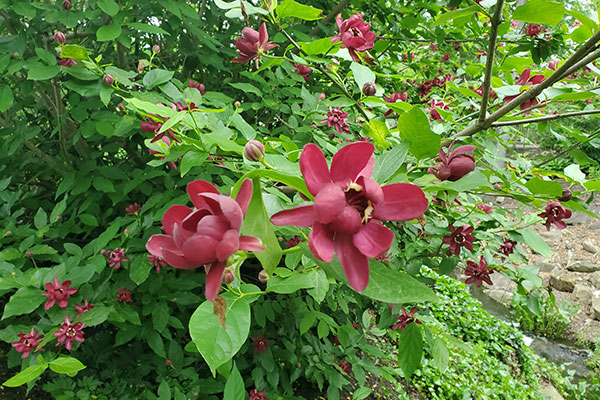
Aphrodite Sweetshrub
Common Name: Aphrodite Sweetshrub
Botanical Name: Calycanthus floridus
Height: 5–10 feet
Spread: 5–6 feet
Location: Full sun to part shade
Bloom: April–July, red
Hardiness zone 4–9
Sweetshrub is a dense, rounded, rather large shrub that is named for the aromatic scent the magnolia-like red flowers emit. You can see how large they are in our Woodland Gardens—commonly growing to 10 feet. The dark green leaves are oval shaped and turn a golden yellow in the fall. The flowers emerge in early spring, bloom on new and old growth, and last most of the summer, depending on the planting location. The fragrant scent varies greatly from one plant to the next, so it is best to buy yours while the plant is in bloom.
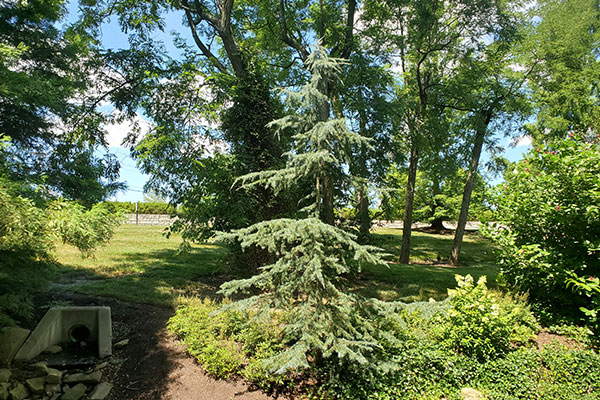
Karl Fuchs Deodar Cedar
Common Name: Karl Fuchs Deodar Cedar
Botanical Name: Cedrus deodara
Height: 40–60 feet
Spread: 20–30 feet
Location: Full sun
Bloom: non-flowering
Hardiness zone 6–9
This artistic-looking cedar has 1.5-inch blue-green needles that are somewhat pendulous with an open growth habit. It is a pyramidal evergreen with a strong central leader and horizontal branching, adding year-round beauty to your garden. Notice the hardiness zone listed for Deodar. The Creation Museum is in zone 6a, so we are in the coldest area for them and colder than they normally like for some winters. They have some wind protection in the Woodland Gardens, and we keep the roots warmer with mulch to help them survive.
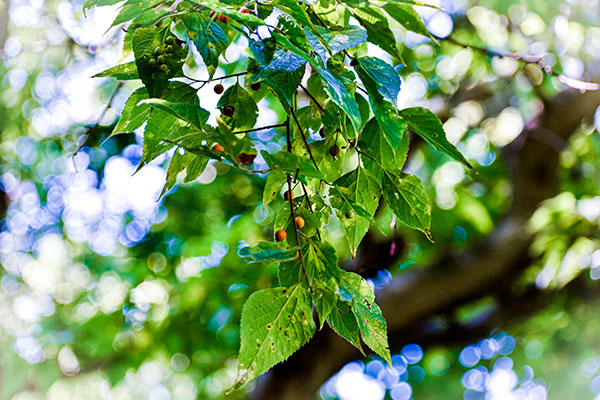
Hackberry Tree
Common Name: Hackberry Tree
Botanical Name: Celtis occidentalis
Height: 50–70 feet
Spread: 40–60 feet
Location: Full sun to part shade
Bloom: April to May, green
Hardiness zone 2–9
Common Hackberry is a native, deciduous tree naturally distributed throughout the East and Midwest. It can typically grow to 60 feet tall with arching branches, a rounded top, and coarsely textured bark. Its leaves are a dull green that turn a yellow-brown color for the fall. This tree is used more as a utilitarian than an ornamental tree due to its rugged nature and ability to survive questionable sites. It is often sold in seed form because it is difficult to transplant; some easier transplanted cultivars may be more available in commerce.
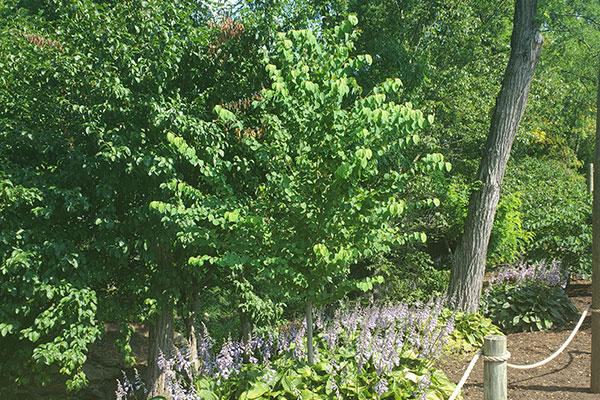
Katsura Tree
Common Name: Katsura Tree
Botanical Name: Cercidiphyllum japonicum
Height: 40–60 feet
Spread: 25–60 feet
Location: Full sun to part shade
Bloom: March to April, green
Hardiness zone 4–8
The Katsura is sometimes confused for a Redbud tree because the leaves have a similar heart-like shape. They emerge in the spring as a reddish-purple, change to a light green for the summer, then yellow for fall. This is considered an understory tree though the overall rounded shape and attractive foliage would also make it an excellent shade tree for your garden. No serious disease or insect problems are noted.

Eastern Redbud
Common Name: Eastern Redbud
Botanical Name: Cercis canadensis
Height: 20–30 feet
Spread: 25–35 feet
Location: Full sun to part shade
Bloom: April, pink flower
Hardiness zone 4–9
There are many hybrid Redbud trees, all having unique characteristics. The standard Eastern Redbud that you see in tree lines, fence rows, and in the woodlands of the eastern U.S. still stands as a remarkably attractive native tree and is still available in commerce. It is very adaptable to a variety of conditions and consistently produces the pink flowers seen for miles in early spring before the leaves emerge, making it a carefree choice for most gardens.

Golden Shadows Pagoda Dogwood
Common Name: Golden Shadows Pagoda Dogwood
Botanical Name: Cornus altrnifolia
Height: 15–25 feet
Spread: 20–32 feet
Location: Full sun to part shade
Bloom: May to June, yellowish white
Hardiness zone 3–7
Golden Shadows dogwood has a natural branching habit that is distinctively horizontal, displaying strength and grace. It thrives in light shade and still produces a variegated foliage that is a colorful, bright yellow and light green. The white flowers emerge in the spring on “old wood,” so prune in late spring if needed. This will make a great addition as a specimen to your garden.

Summer Fun Chinese Dogwood
Common Name: Summer Fun Chinese Dogwood
Botanical Name: Cornus kousa var. chinensis
Height: 10–20 feet
Spread: 10–15 feet
Location: Full sun to part shade
Bloom: June to July, white
Hardiness zone 5–9
When the variegated leaves first appear, they are striking with a thin pink edge lining each white-and-green leaf. The emerging white flowers in June cover the tree and last up to 6 weeks in the summer, followed by small strawberry-like fruit that form late summer. The leaves then turn to shades of scarlet to pink for the fall and expose the peeling gray bark as they fall. Only prune this eye-catching beauty after flowering if needed.

Brilliance Autumn Fern
Common Name: Brilliance Autumn Fern
Botanical Name: Dryopteris erythrosora
Height: 1–2 feet
Spread: 1–2 feet
Location: Part shade to shade
Bloom: non-flowering
Hardiness zone 4–9
This is a Proven Winner fern with fronds that emerge in the spring a bright orange that then mature to a dark green for the summer. These ferns are shade-lovers but will perform well in part sun with soil that remains well irrigated. They can be used in a mass shade garden planting, as a ground cover, or in a corner of your garden as a filler for a difficult spot. Mulching the plants in the winter will help them to conserve moisture and keep the roots system warm in cooler climates, helping them survive.
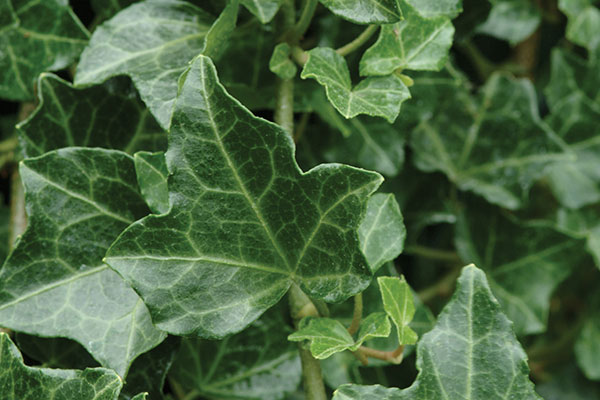
English Ivy
Common Name: English Ivy
Botanical Name: Hedera helix
Height: 20–80 feet climbing
Spread: 3–50 feet spreading
Location: Part shade to full shade
Bloom: September to October, white
Hardiness zone 4–9
English ivy is commonly used as a ground cover plant, but beware: it climbs. It can climb and cover a plant that you may not want it to grow on, though you can easily cut back new growth to keep it on the ground. Conversely, it can cover a fence or wall, adding an interesting element to your garden. Either way, this is an easy plant to grow that will tolerate many conditions, adding year-round appeal wherever you plant it.

Pink Chiffon Rose of Sharon
Common Name: Pink Chiffon Rose of Sharon
Botanical Name: Hibiscus syriacus
Height: 5–12 feet
Spread: 4–6 feet
Location: Full sun to part shade
Bloom: July to October, pink
Hardiness zone 5–9
This Rose of Sharon is a bushy, deciduous shrub in the Hibiscus family, not the Rose family as commonly thought. It blooms continuously during the summer with large pink flowers 3 inches wide that contrast well with the dark green, oval-shaped leaves. You can plant these in a mass as we have in the Woodland Gardens, or as an individual planting. It will add summer color to any garden however you choose to use this plant.
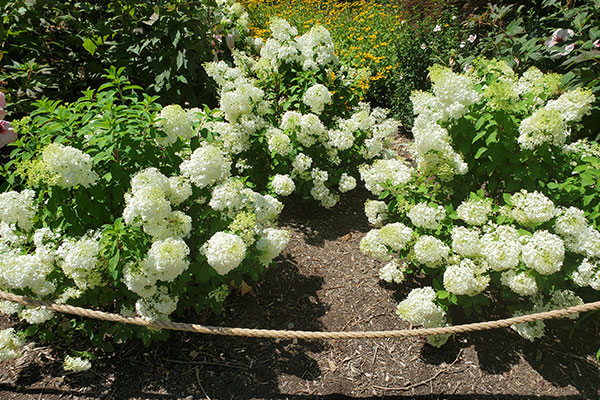
Bobo Hydrangea
Common Name: Bobo Hydrangea
Botanical Name: Hydrangea paniculata
Height: 3–6 feet
Spread: 3–4 feet
Location: Full sun to part shade
Bloom: July to September, white flower
Hardiness zone 3–8
Bobo is a dwarf variety that grows only three feet high. It produces white flowers that cover most of the plant all the way to the ground, brightening any spot in your garden. The flowers turn a pinkish color later in the season, then to brown in the fall, giving this plant a long multi-season of interest. They have very little insect or disease problems, so they do not require a lot of your time to care for.

China Girl Holly
Common Name: China Girl Holly
Botanical Name: Ilex mesog
Height: 7–10 feet
Spread: 6–8 feet
Location: Full sun to part shade
Bloom: April to May, White flower
Hardiness zone 4–9
China Girl is a popular evergreen shrub that has a very dense and rounded growth habit. Shiny, dark green leaves stay on the plant year-round, making it a great foundational plant for any landscape. Red berries appear in the fall and persist into the winter, adding seasonal color. China Holly is dioecious, which means that you will also need to plant a China Boy as a pollinator to have the berries on the China Girl. One China Boy will usually pollinate most residential landscapes. This is a hardy, disease-resistant plant, but you will need to watch for some unwanted insects, including scale, and treat as needed.
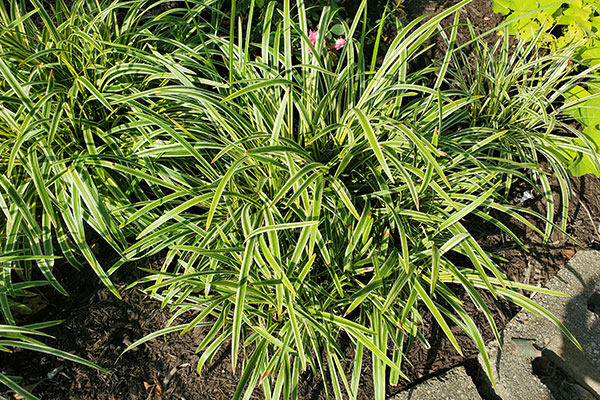
Variegated Lilyturf
Common Name: Variegated Lilyturf
Botanical Name: Liriope muscari variegata
Height: 1–1.5 feet
Spread: 1–2 feet
Location: Full sun to part shade
Bloom: August, Purple flower
Hardiness zone 5–11
We love Liriope as a border plant, but we also use it in groupings throughout the Botanical Gardens. Be careful to read the growth habits for your liriope before planting. Our variegated variety “Muscari Variegate” grows in clumps that increase in size every year. Our solid green variety, “Big Blue,” is a ground-covering plant and will take over an area. The types look very similar in the pot you purchase them in, so we suggest reading the tags before you plant them, as with all plants. Both our types of Liriope have violet flowers, though some white varieties are available. They bloom in late summer, giving way to black berries that persist into the winter. They are perennials, so we cut them all the way back at the end of the season. They return in the spring with new growth.
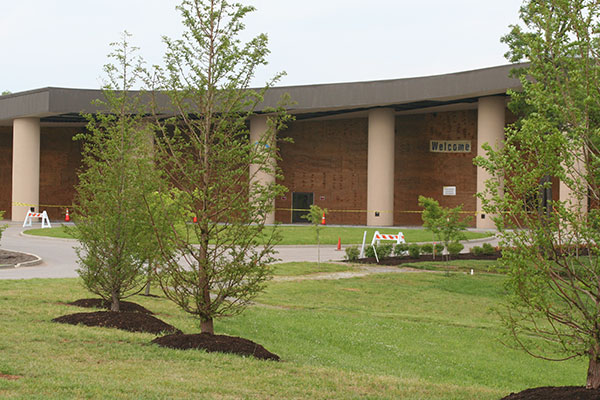
Dawn Redwood
Common Name: Dawn Redwood
Botanical Name: Metasequoia glyptostroboides
Height: 70–100 feet
Spread: 15–25 feet
Location: Full sun
Bloom: non-flowering
Hardiness zone 4–8
Dawn Redwood was considered extinct until 1944 when it was discovered growing in central China. It is closely related to the bald cypress and sequoia redwoods. It is a fast growing, deciduous tree that is also a conifer: in other words, it drops its “leaves” that look like needles in the fall and produces cones, like many other evergreens. The needles are softer than most evergreens and turn a rust color in the fall before dropping to expose the beautiful, fluted trunk with somewhat shaggy bark. This big, bold tree has proven to be adaptable to most soil types and is easy to grow.
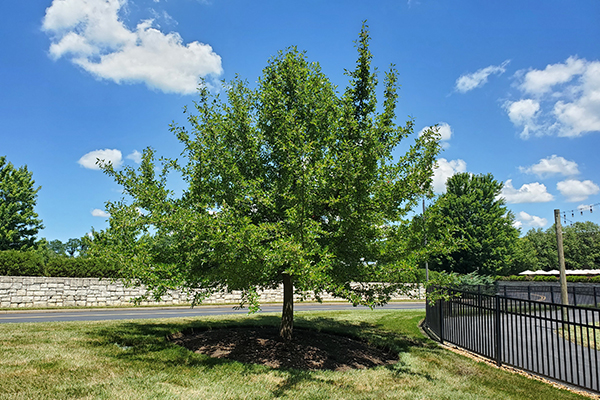
Black Gum
Common Name: Black Gum
Botanical Name: Nyssa sylvatica tupelo
Height: 30–50 feet
Spread: 20–30 feet
Location: Full sun to part shade
Bloom: May to June, white
Hardiness zone 3–9
Black Gum is a popular Eastern U.S. native tree known to be one of the first to begin the leaf color change in the fall. While the leaves are a glossy green in the summer, you will have a variety from yellow, orange, red, and even purple, which may all appear on the same branch for the fall. They also have a white flower in the spring, followed by a bluish black fruit that many birds love. There are no serious insect or disease problems on this ornamental shade tree that may look great in your garden.
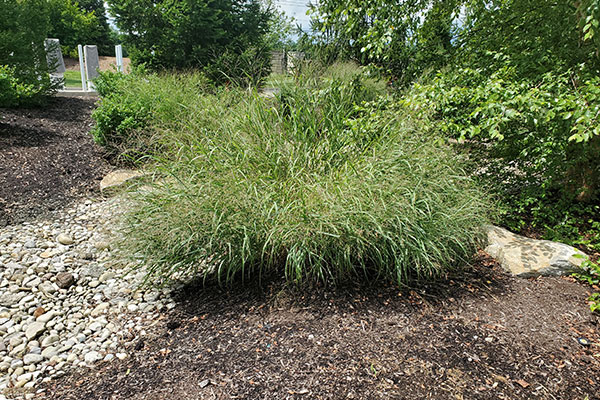
Heavy Metal Switch Grass
Common Name: Heavy Metal Switch Grass
Botanical Name: Panicum virgatum
Height: 4–6 feet
Spread: 2–3 feet
Location: Full sun to part shade
Bloom: July to February, pinkish
Hardiness zone 4–9
Switch Grass is an easily grown, eastern U.S. native that once covered large prairies and open wooded areas. This variety is an attractive metallic blue that grows to 3 feet tall. When in bloom with its pinkish plumes, it can reach to 5 feet. The seed pods in the plumes mature and last well into the winter, providing another food source for winter birds. You can use this plant in masses or as an accent in your garden.
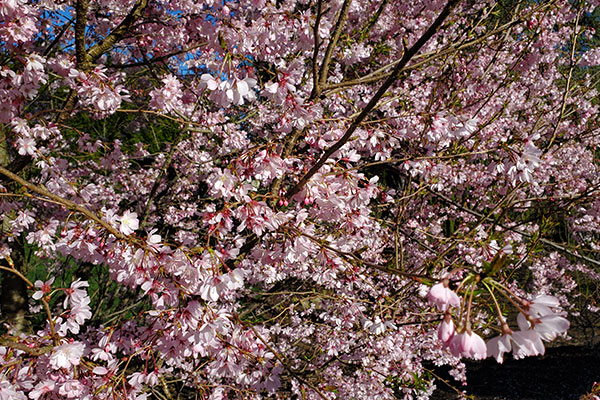
Autumn Flowering Cherry
Common Name: Autumn Flowering Cherry
Botanical Name: Prunus subhirtella ‘Autumnalis’
Height: 20–40 feet
Spread: 15–30 feet
Location: Full sun to part shade
Bloom: April, pink to white flowers
Hardiness zone 4–8
This cherry tree flowers heavily in the spring before the shiny green leaves emerge; then it blooms again in the fall or autumn, although not as abundantly. It typically has a spreading, rounded growth habit with an open branching structure. Autumn Flower Cherry is known to be resistant to disease, but like all cherries, they are susceptible to several insects that you will need to watch for.
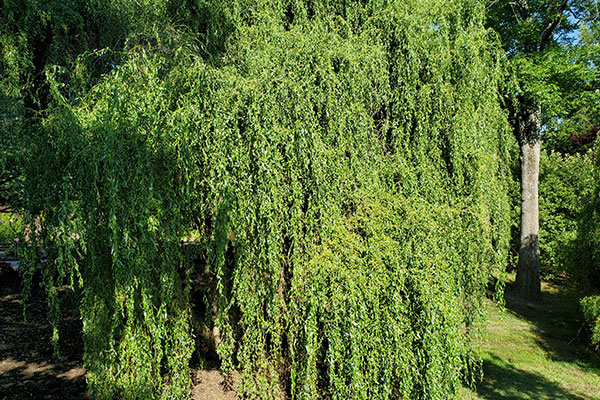
Scarlet Curls Corkscrew Willow
Common Name: Scarlet Curls Corkscrew Willow
Botanical Name: Salix matsudana alba
Height: 40–50 feet
Spread: 20–25 feet
Location: Full sun
Bloom: Early spring, yellow-green catkins
Hardiness zone 5–8
It can be hard to believe that the willows you see in our Woodland Garden started in 3-gallon pots planted in 2006. These are vigorous growers that give an abundance of appeal with their twisted growth habits. They do sucker and send off shoots at the base that require pruning on a semi-seasonal basis. They can be planted in groves such as we have in our Bog Garden or as a single specimen like we have in our Woodland Garden. Which way will you use these in your garden?

Japanese Snowbell
Common Name: Japanese Snowbell
Botanical Name: Styrax japonicus
Height: 20–30 feet
Spread: 20–30 feet
Location: Full sun to part shade
Bloom: May to June, white
Hardiness zone 5–9
Japanese Snowbell has a relatively compact growth habit at youth that opens to a more broadly rounded shape with horizontal branches as it matures. It blooms in late spring, displaying the white snowbells that are in the name. The leaves emerge on the upper portion of the branches, and they do not block the view of the pendulous snowbell flowers. This is considered an understory plant, so it prefers some shade and also preforms best with some with protection.

Doublefile Viburnum
Common Name: Doublefile Viburnum
Botanical Name: Viburnum plicatum var. tomentosum ‘Mariesii’
Height: 10–16 feet
Spread: 12–15 feet
Location: Full sun to part shade
Bloom: April to May, white flower
Hardiness zone 5–8
Doublefile viburnum is named for its double rows or files of white flowers that appear profusely along its horizontal branching in April or May. After the flowering season is over, the red berried fruit will appear, changing to black as the season progresses. The green leaves also turn to a beautiful auburn red color. The fruit is attractive and a good late season food source for birds. This multi-stemmed shrub will thrive in a variety of soil types, but it does prefer ample moisture. The Creation Museum Botanical Gardens uses this plant as a divider or “walls” that separate garden areas, although you could plant this as an individual specimen in your garden.